Szeged Vision
Campaign about climate change
When planning this campaign about climate change we knew it was going to be challenging in many ways, climate change is a hot topic, and it is difficult to find the right way to talk about it.
We wanted to find an approach that wouldn’t immediately trigger people’s self-protective reactions and that could distance the issue from the sensitive routine of everyday life.
We didn’t want to limit the communication to a few seconds long impulse, this topic requires more time, and rather than aiming for intense emotional reactions, we wanted to educate, spread knowledge. Therefore we tried to capture the low attention threshold with strong visuals and we created an interface that is designed for the user to spend more time there.
It was also important for us to bring this big global topic within reach, and make our content relatable.
Context
Context
Context
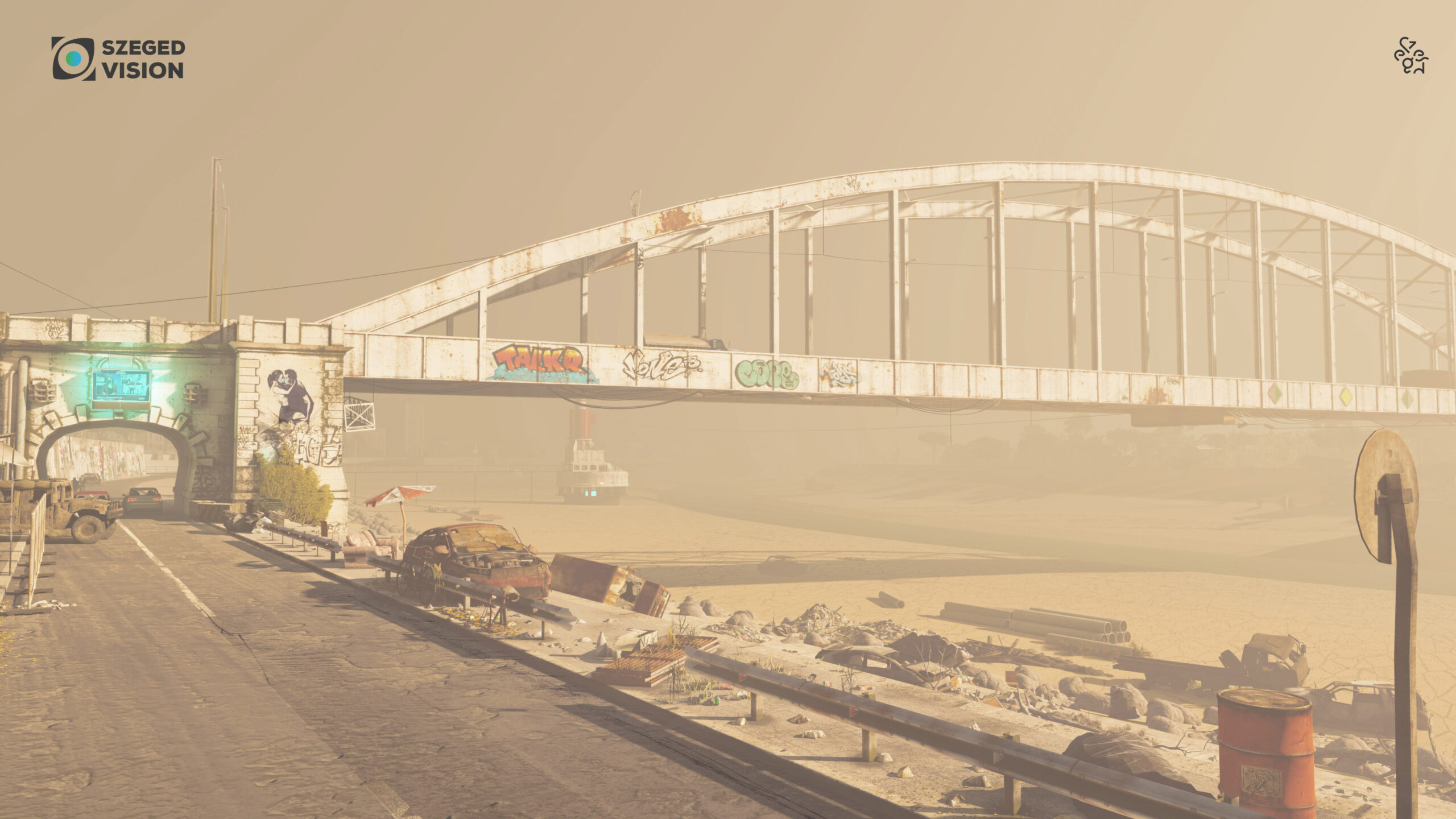

Context
The biggest challenge we faced was avoiding the immediate self-defence reactions when bringing up the topic. If you tell someone that driving in cities is simply not sustainable, they will immediately answer, “ But how am I supposed to take my kids to school tomorrow, if I don’t drive?”. And then you have found yourself in a communication environment where it is hard to talk about the big picture.
The solution is easy: let’s take the whole topic to the future!
We chose the date 2050: it is certainly far enough from the present, that we can start a discussion about cars for example, without having to refer to the daily routines of the people, but it is close enough to see the consequences of our behavior, and to know that it is our and our children’s future. We can show the long-term results of individual efforts as well, what would happen if we made green community areas instead of parking lots, or if more people would travel in a sustainable way.
The theme of the future is also accompanied by a bit of science fiction, which will evoke exactly the emotions we need to effectively communicate this topic: curiosity and interest instead of being offended, and defensive.
Instead of telling someone that driving is not sustainable, we tell them that there won’t be any cars in the cities by 2050, and we will travel by these sustainable future vehicles. This way we might as well pass the information, why cars are not sustainable, without them worrying about taking the kids to school tomorrow.

Visual
Visual
Visual

Visual
As we created a context which is a bit distant from our everyday lives, we wanted to find a way to make it feel close, and relatable. That is why we used local urban spaces for our visuals, that are part of the citizens everydays life. We recreated these spaces in this imagined 2050 vision, and we could present all the information about the topic in this environment. It makes it understandable as we use, and show local examples for every detail.
We wanted to make this future environment as real as possible, so we decided to create a visual experience “as if we were really there”.
We started by 3D modelling the area in 360 degrees in the selected locations, which gave us a much greater degree of freedom. We also added a little bit of gamification to the user experience, as we gave the visitor the freedom to look around, get closer to something and decide what to click on, and read.
It took several months to develop the visuals and the contents of the campaign.
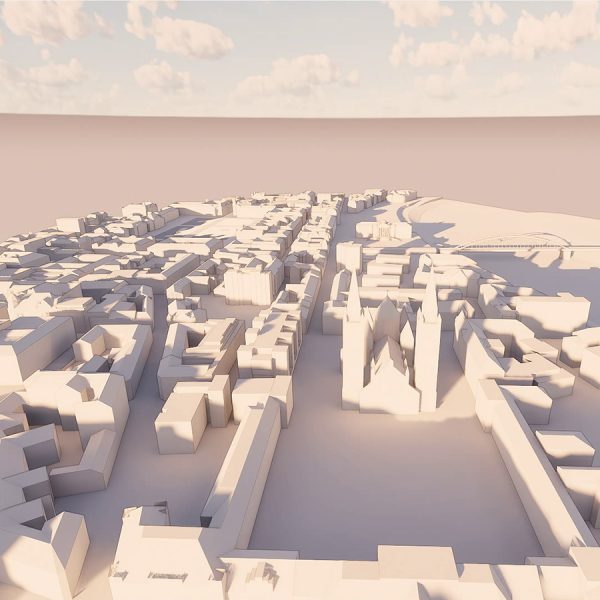
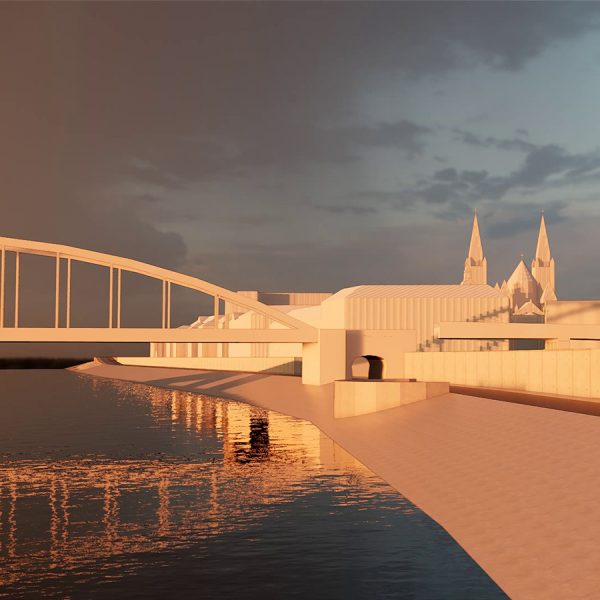
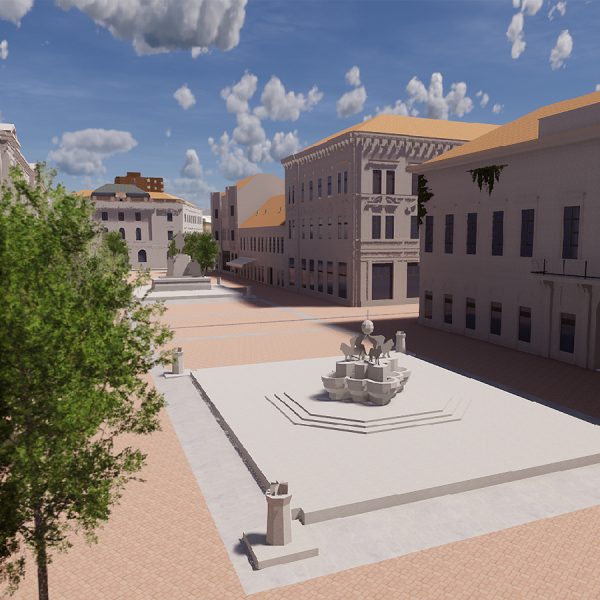



Content
Content
Content
Content
The goal was to base this communication project on science but also have the freedom of imagination on our side. Luckily the project was launched in a university town, and a regional centre, we could find scientists and experts on every relevant topic like climatology, water management, waste management, food industry, economy, artificial intelligence and many more. We conducted interviews with these experts, who were happy to share their experiences, predictions, and ideas. As much as we wanted to know the scientific facts we also asked them to imagine a positive future, what if we used all our resources and money to fight climate change and built an ideal city. We used these ideas to create a powerful and interesting visual content, and explained everything in the texts attached with scientific accuracy.
We adapted the content to the specificities of the selected sites, for example, we talked more about transport at the major transport intersection, while at the pedestrian street we focused more on the heat island effect or the potential for transformation of the local economy.
We used different colours for different topics on the pictures, we divided: transport, climate, technology and urban design.
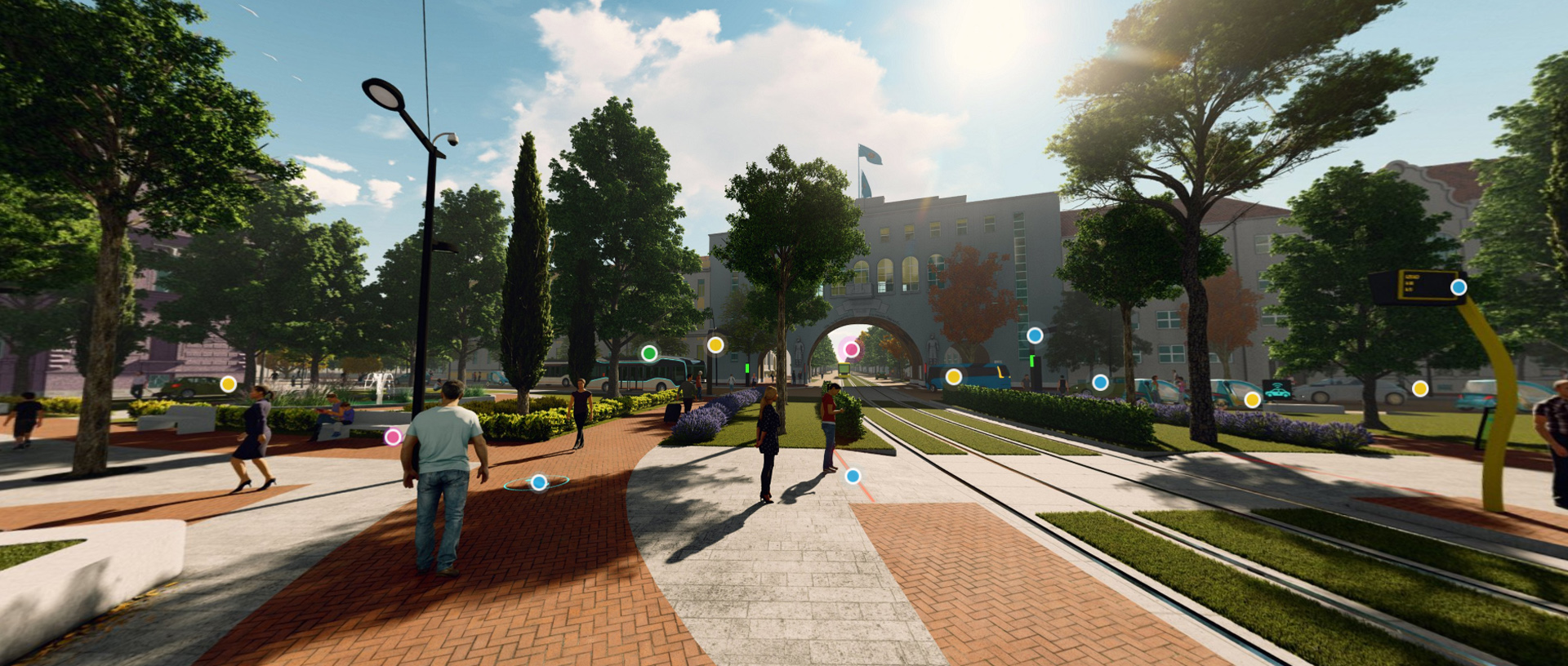
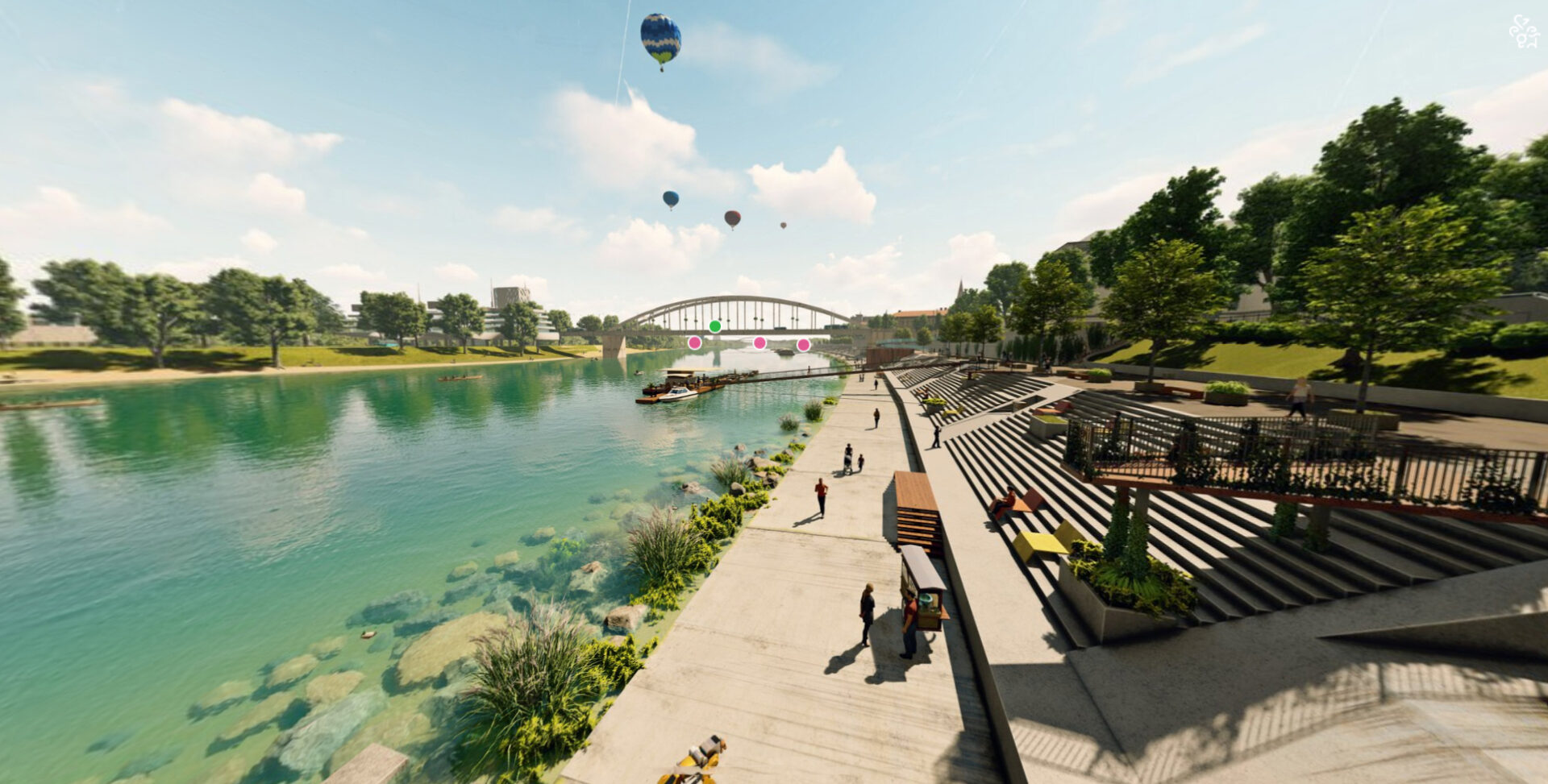
The campaign
The Campaign
We adapted the communication schedule to the five images and divided our content into 5 sections. We published the images every 5 days, in order to maintain interest over time. Our first image was different from the others. We wanted to depict a realistic vision of the future, which became quite apocalyptic. Apart from reinforcing the project’s main message and raising awareness of the threat of climate change, it was also an excellent way to reach the national press with these images. Interest surrounding the project exceeded our expectations, with our first Facebook post depicting an apocalyptic scene reaching more people organically than the population of Szeged, thanks to the national interest.
After that, we published new locations every 5 days and started a social media campaign with a lot of extra content. To highlight certain topics during the campaign period, and to emphasise the scientific aspect of the project, we also broadcast live video interviews and conversations with experts on each topic online.
The campaign

More ideas…

Header

Header

Header


